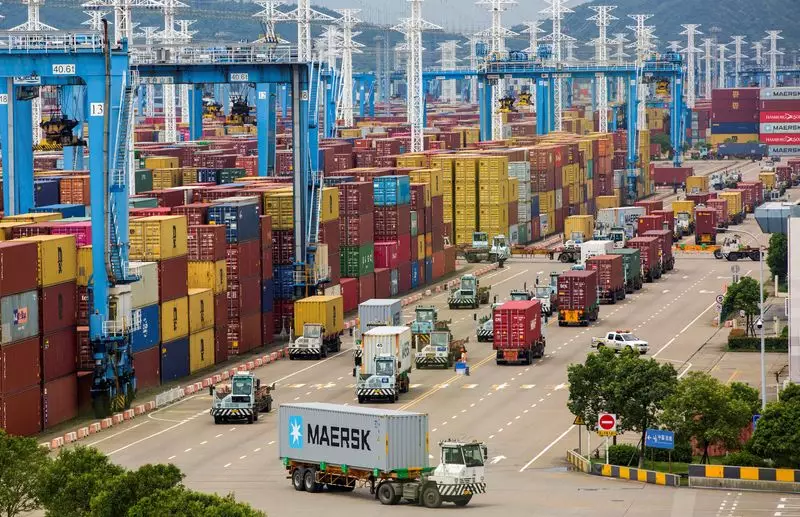China’s exports saw a significant increase in May, marking the second consecutive month of growth. This growth, which amounted to a 7.6% year-on-year increase in export value, signifies that factory owners in China are successfully finding buyers overseas. These positive export figures have provided some relief to the economy as it continues to strive for a stable recovery. However, uncertainty lingers regarding the sustainability of these export sales, particularly amidst a lingering property crisis that has resulted in weak domestic demand.
The recent data on China’s exports reveals an interesting contrast between outbound shipments and imports. While exports saw a notable increase, imports only grew at a slower pace of 1.8%. This discrepancy underlines the fragility of domestic consumption within the Chinese economy. The ongoing property crisis has significantly impacted consumer and investor confidence, leading to subdued domestic demand. The weaker growth in imports further emphasizes the challenges posed by the current economic environment.
It is worth noting that the growth in China’s exports may also be influenced by global trends, particularly in the electronics sector. A potential cyclical upturn in this sector could be driving increased sales of components and finished manufactured goods from China. This external demand is playing a vital role in supporting the country’s export growth, amidst challenging domestic conditions. The interplay between global market dynamics and China’s export performance underscores the complex nature of the country’s economic recovery.
The mixed signals from recent economic data reflect the uneven nature of China’s recovery. While first quarter growth surpassed expectations and positive export figures pointed towards improving global demand, concerns remain regarding soft domestic consumption. The ongoing property sector crisis continues to be a significant drag on the economy, affecting both consumer confidence and business activity. Despite these challenges, policymakers can potentially leverage the positive trade data as they work towards fostering a more comprehensive economic recovery.
Looking ahead, projections indicate a modest growth forecast for China’s economy in 2024, aligning with Beijing’s target of around 5% growth. However, the International Monetary Fund has highlighted the risks posed by the property troubles within the country. The trade surplus, which expanded to $82.62 billion in May, surpassing initial forecasts, provides a buffer for China’s economy amidst ongoing challenges. It remains essential for policymakers to monitor the evolving economic landscape and take proactive measures to address underlying vulnerabilities.
China’s export performance serves as a critical indicator of the economy’s resilience amidst internal and external challenges. The growth in exports, while positive, must be viewed within the context of broader economic trends and uncertainties. By navigating the complexities of global trade dynamics and addressing domestic weaknesses, China can strive towards a more stable and sustainable economic future.

